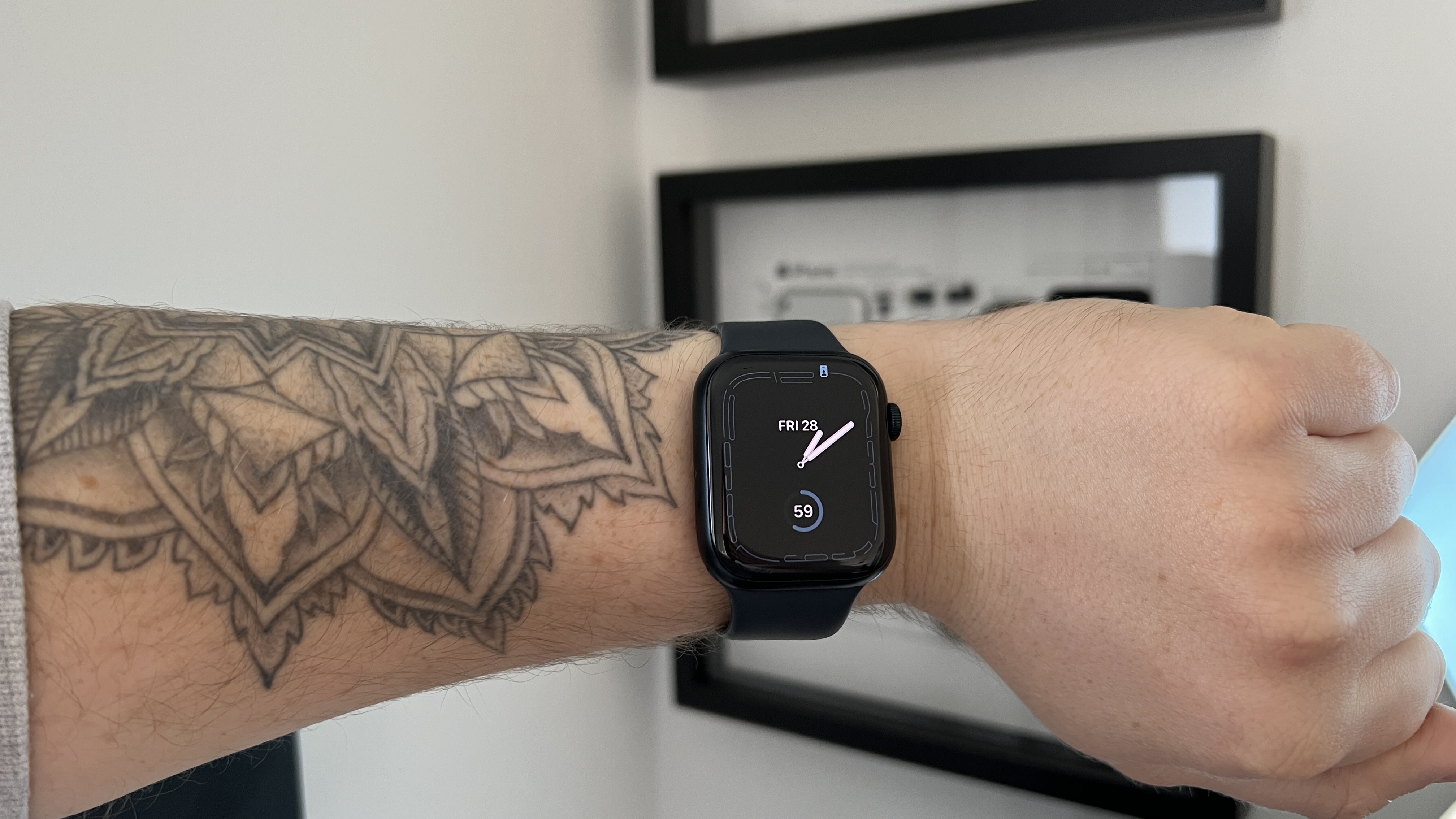Laptop Mag Verdict
The Apple Watch Series 8 is, objectively, a fantastic smartwatch for iPhone users — growing into one of the best wearables over years of iterative updates. But with the SE offering a similar experience at a lower price and the Ultra giving more demanding users everything they want, stop and think about what you need before clicking that buy button.
Pros
- +
Gorgeous display
- +
Stylish new colors
- +
New menstrual and ovulation tracking
- +
Superior UI to the competition
- +
Enhanced sleep tracking
Cons
- -
Identical design to the Series 7
- -
Improvements only minor
- -
Still weak battery life
- -
Many folks can get away with cheaper SE
Why you can trust Laptop Mag
One thing we already know is that the Apple Watch Series 8 is a great smartwatch. The company’s impressive lineage of iterative updates lends itself to the logical conclusion that you are seeing everywhere: this is another strong entry into the wearable ecosystem.
However, the Series 8 does take that word “iterative” to its most minor extreme. Not to say there aren't some welcome new features, but they are tiny tweaks to the already solid formula of the Series 7. With the new SE sharing a lot of the same tech as this more expensive model, we have some different questions to answer here.
While I will take you through my time using the Apple Watch Series 8, we can use this to answer some key questions: when should you think about upgrading your Apple Watch and do you need everything that the Series 8 has to offer?
Apple Watch Series 8 availability and price
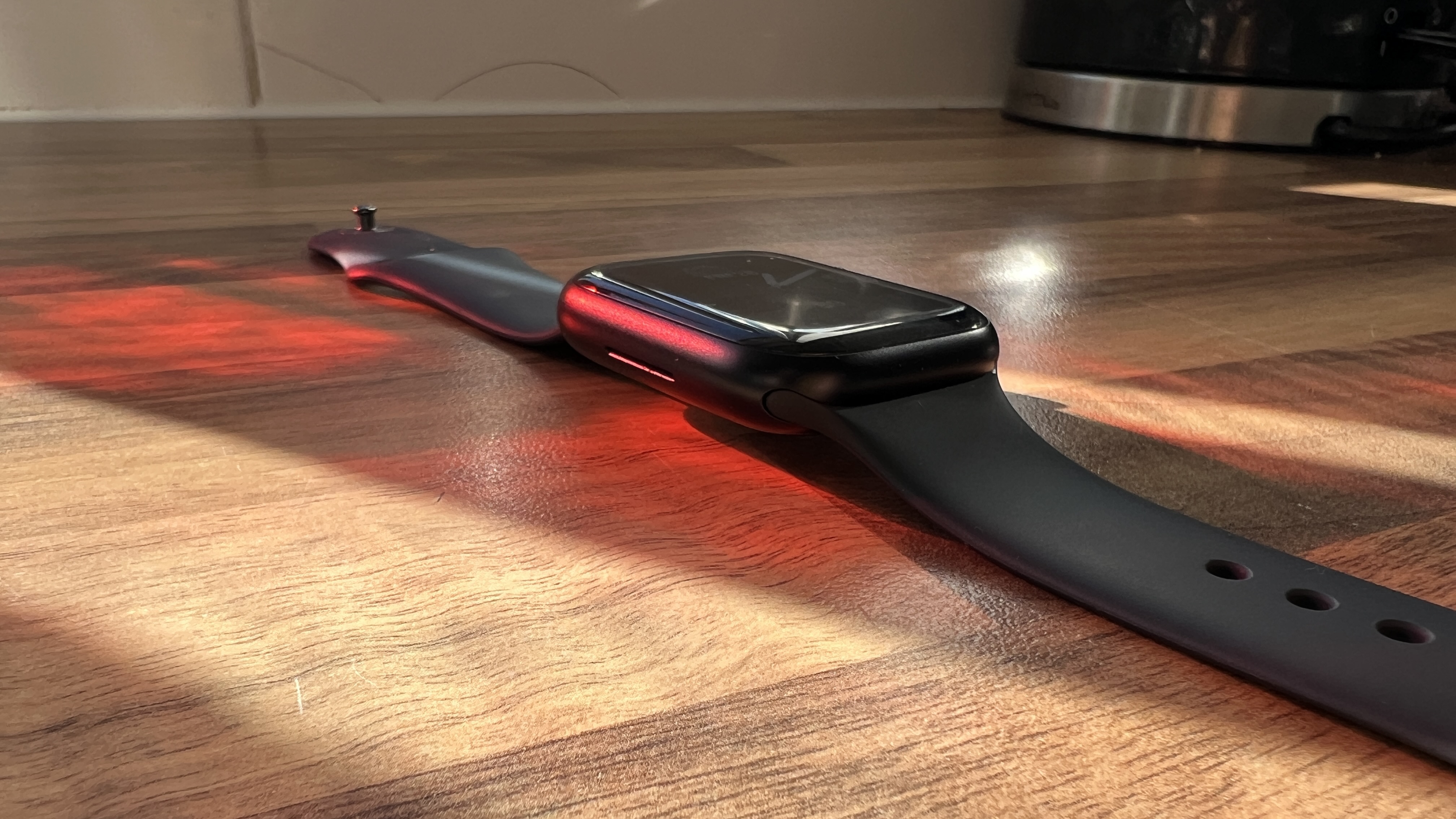
The Apple Watch Series 8 is available in two sizes — 41mm and 45mm — along with a choice of either just GPS or GPS + cellular connectivity. There’s also a variety of material finishes and colors. Let’s break them down:
- The base model 41mm GPS version with an aluminum case starts at $399/£419, going up to $499/£529 for GPS + Cellular.
- The 45mm model adds an additional $30/£30 to the price, meaning you’re paying $429/£449 and $529/£549, respectively.
- Upgrade to a stainless steel case and the 41mm starts at $699/£729 with the larger 45mm coming in at $749/£779. With these, there is no cheaper GPS-only option. You just get the GPS + Cellular model.
Bear in mind that these prices are with the cheapest possible watch straps. Any of the fancier straps can cause the price to skyrocket up to an eye watering $1,759/£1,739.
That is a steep price, especially for those of us in the UK who have seen a new model price jump from the Series 7’s launch cost of £379 — something that has happened to the iPhone 14 prices too.
Apple Watch Series 8 design
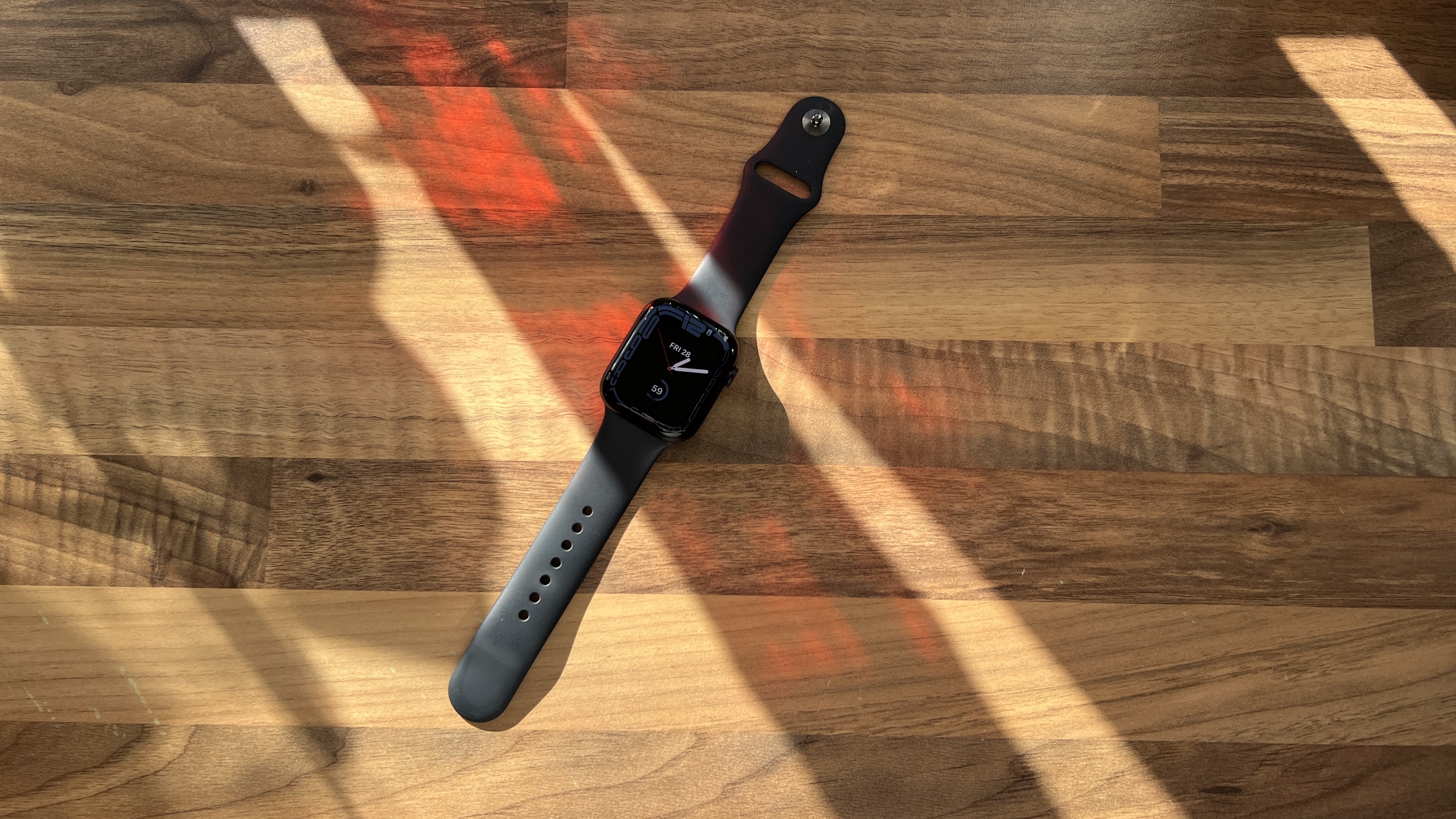
To say you’re getting more of the same in the Series 8 would be an understatement. Outside of the new color finishes (huge fan of this midnight shade), it is identical in aesthetics and size to the Series 7.
The 41mm model measures in at 1.6 x 1.5 x 0.4 inches, whereas the 45mm sports the same thickness, but sees its other dimensions increase to 1.8 x 1.5 inches. Weight-wise, we need to break this down further.
41mm Aluminum
- GPS + Cellular : 1.14oz
- GPS : 1.13oz
41mm Stainless Steel
- GPS + Cellular : 1.5oz
45mm Aluminum
- GPS + Cellular : 1.38oz
- GPS : 1.37oz
45mm Stainless Steel
- GPS + Cellular : 1.82oz
For context, that is a lot lighter than the Huawei Watch GT3 Pro (3.6 ounces), and the end result is a sleek piece of hardware that feels premium, but adds no extra weight-based strain to your wrist. Visually, people have become used to this atypical shape on your wrist, and in use, no matter how strenuous your workout routine, you won’t feel even the slightest discomfort wearing it.
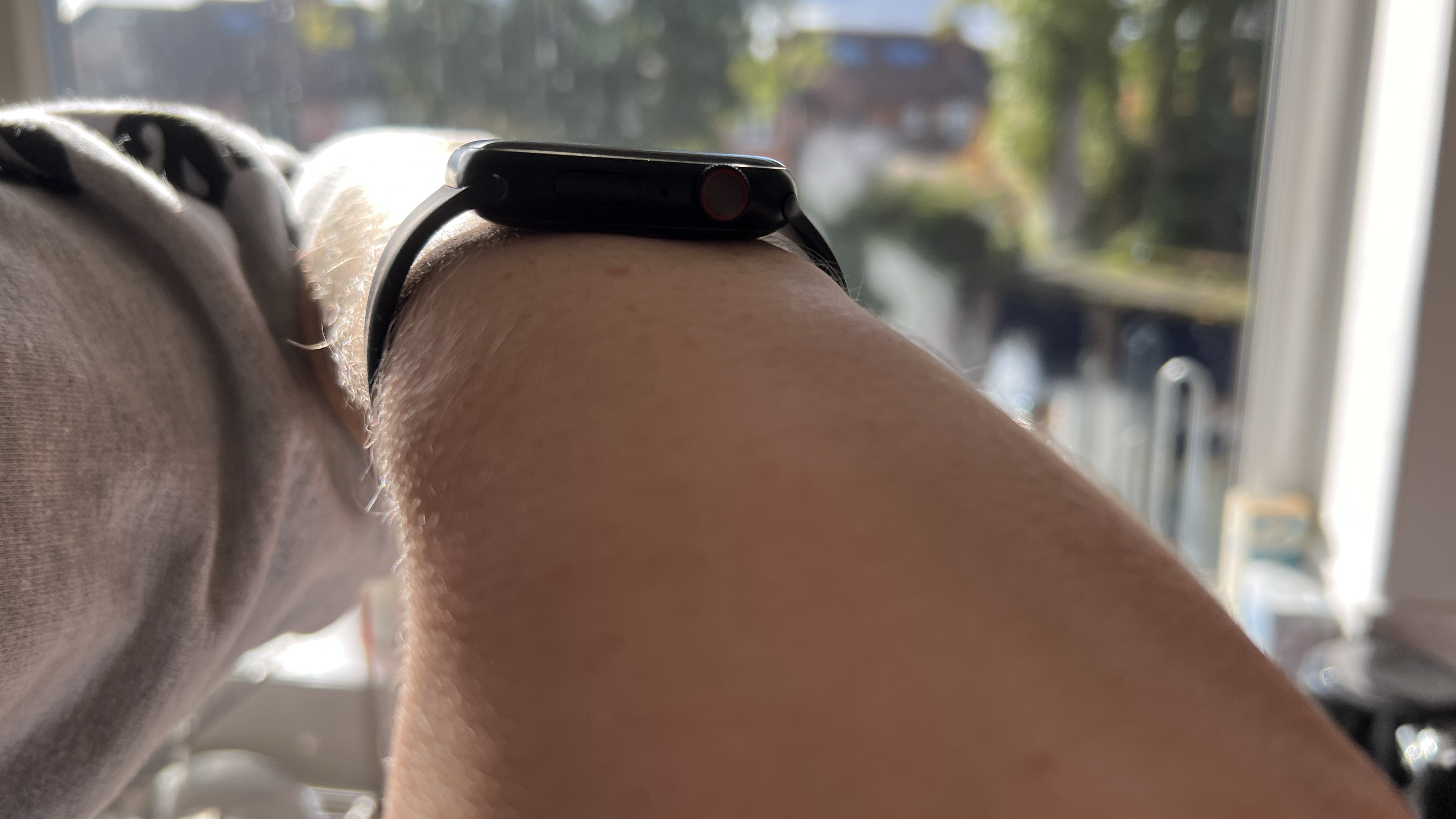
However, with this copy and paste of the standard, almost bubbly design from last year comes the same gripes. The glass curves around the edge without protection, leading to it being particularly scratch-prone without a screen protector. And the rectangular shape with an attachable band doesn’t quite taper at the edges and form a snug fit around your wrist like a traditional watch.
Don’t get me wrong — it’s not a dealbreaker. But while the flexibility of the sports band I’m using allows for comfortable wearability, there is still some space between the strap and the wrist due to the watch’s shape.
Apple Watch Series 8 display
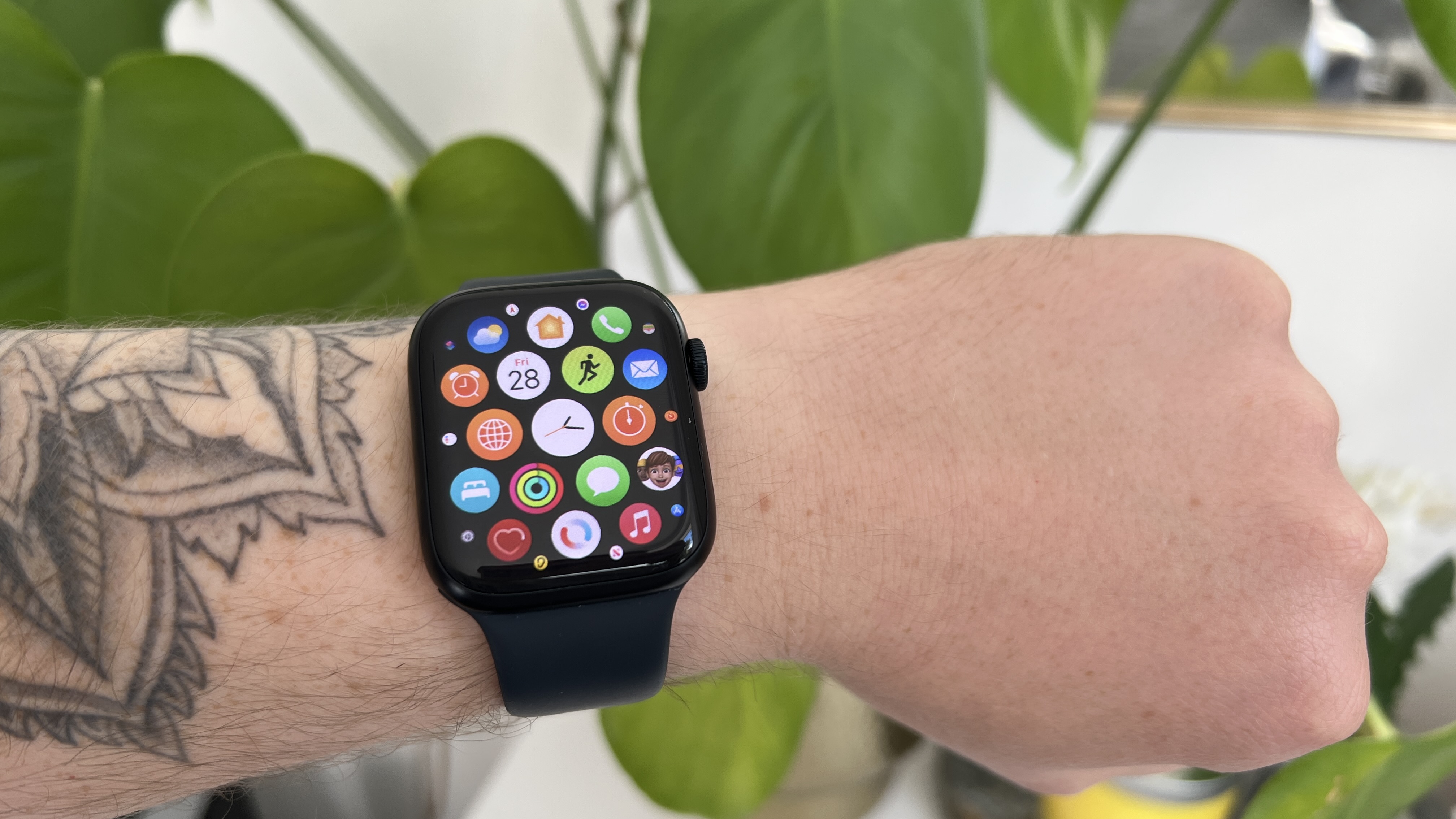
No changes here when compared to the Series 7, but that’s not a bad thing. The Always-On Retina LTPO OLED display is capable of up to 1,000 nits of brightness and the resolution at up to 396 x 484 pixels is super crisp on a panel of this size.
Colors are nice and vivid, thanks to the OLED technology that really makes watch faces and complications pop, and touchscreen responsiveness is just right to the point of being super sensitive, but not so much so that you can accidentally whip by what you’re looking for.
And yes, there is the always-on technology, which means you can have a watch face showing constantly, but do you really need it? Sure, Apple does what it can to try and reduce the battery drain of that, but when it comes to picking between having an extra day of battery and having the display wake up when I raise my wrist, I know what I prefer.
Apple Watch Series 8 fitness tracking
If there is one thing that Apple Watch has become synonymous with, it’s the ever-growing suite of fitness tracking tools and their accuracy. All within the workout app, you can simply pick what you’re doing, be it a simple walk or a moment of yoga, to more strenuous activities like a HIIT workout or a triathlon, all the way to exercises that you may not expect a watch to track such as stair stepping or Tai Chi.
But with watchOS 9, the interface received a dramatic makeover to present more information and give you more functionality. For example, you can now see your rings fill up as you workout instead of needing to revisit the home screen to check your progress.
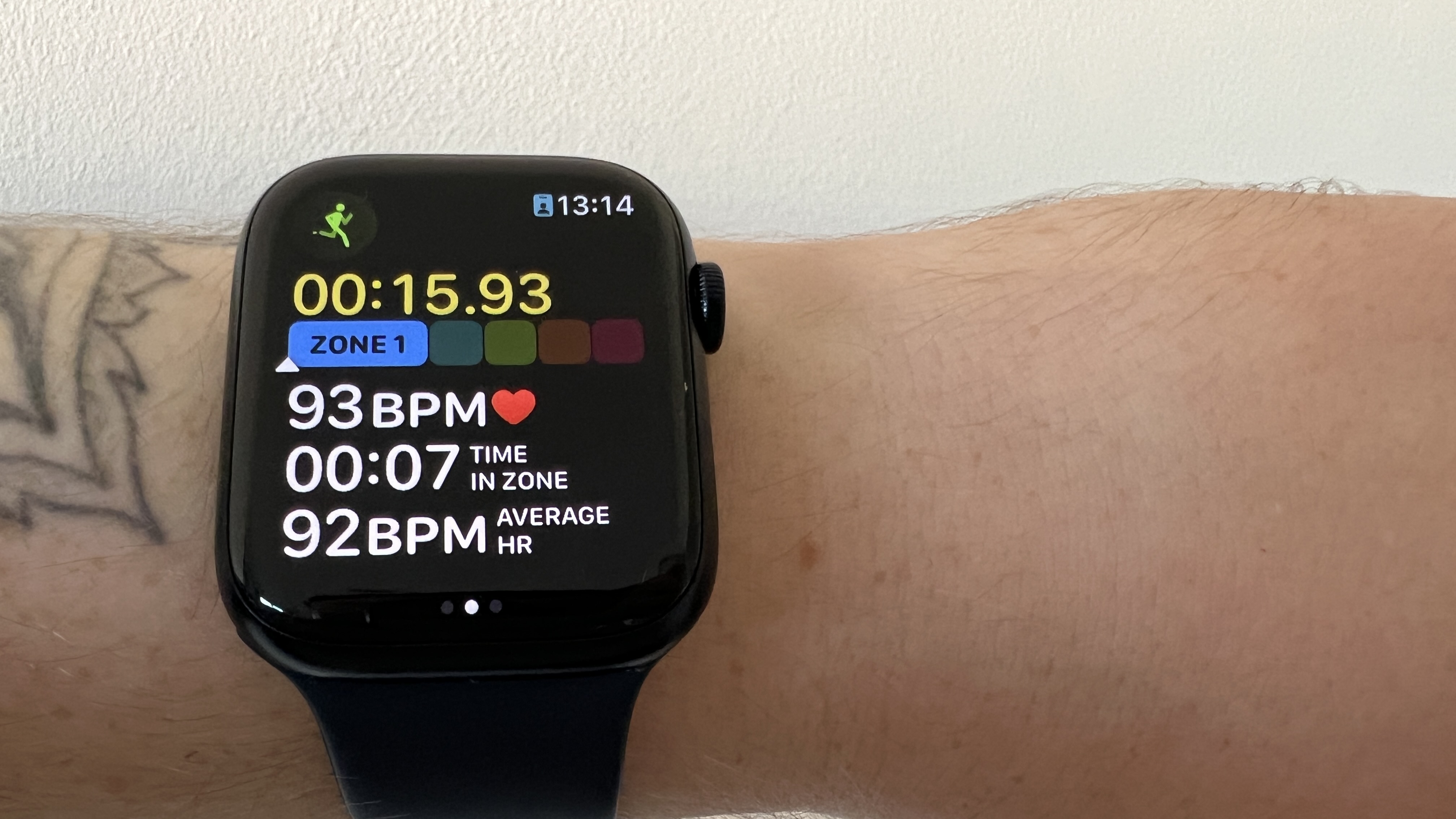
Beyond that, you can now create your own custom workouts and view many more metrics such as heart rate zones, intervals, power and elevation. When running, you can even measure your stride length, ground contact time and vertical oscillation, so you can improve your run efficiency.
And as you’d expect, all of this is super accurate. Run tracking matched the distance I was going perfectly with GPS, and the mix of the on-wrist haptic feedback and AirPods declaring your distance and time intervals keeps you up-to-date, followed by cool down and yoga training for a nice chill out stretch.
Plus, Apple Fitness+ is integrated straight into the workout app. I’ll go into a little more detail about this as I try more of it (maybe in a “my life with Apple Fitness+” article or something along those lines), but early impressions are optimistic.
For now, I am just meditating and going on guided walks, but it’s inspiring me to actually get out of the house and do something. That’s more than I can say for a lot of smartwatches.
Apple Watch Series 8 health tracking
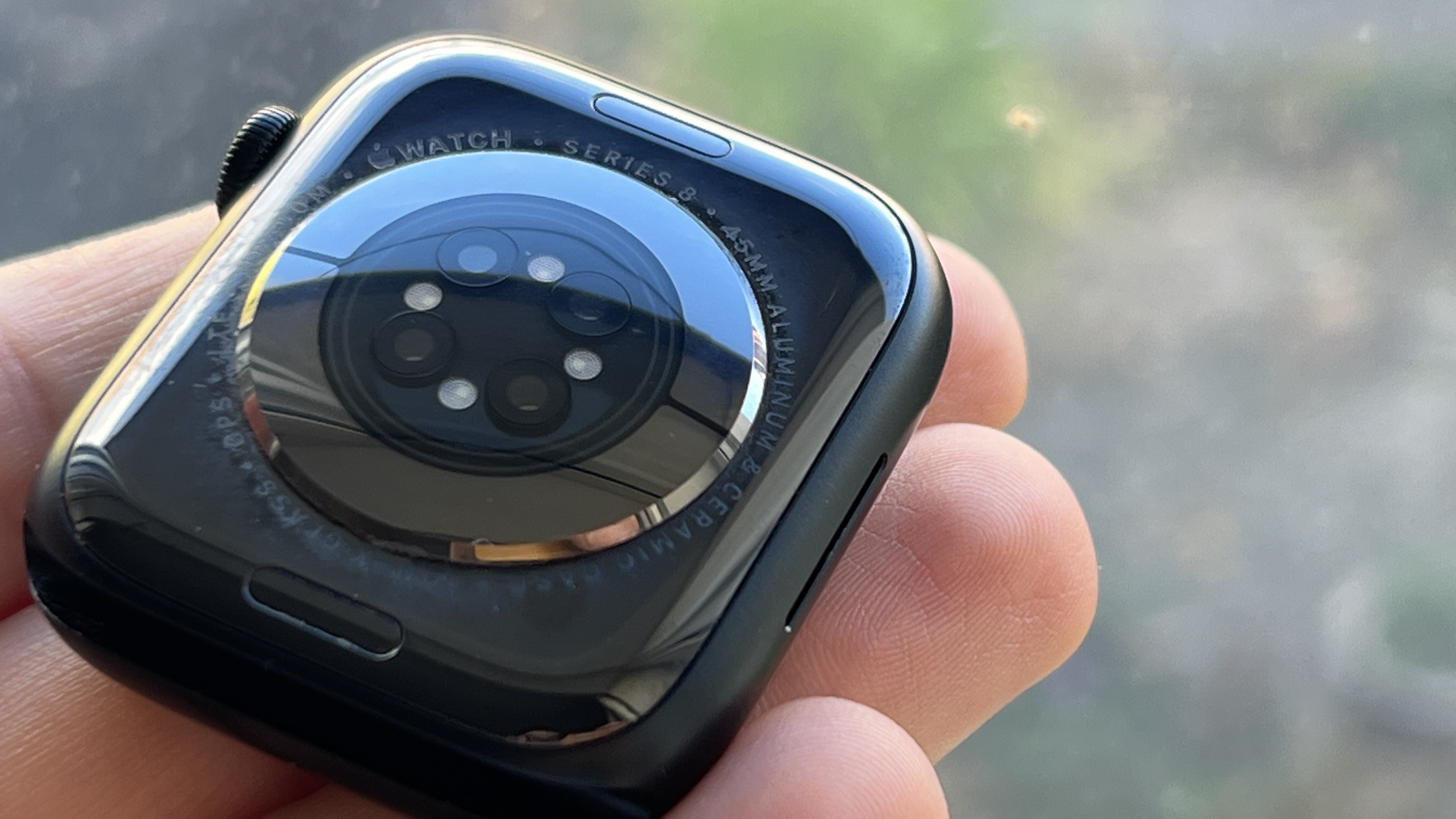
Health tracking is another important element of the Apple Watch lineage and with the Series 8, there are some welcome new features. Rather than tell you about everything you already know exists — heart rate tracking, blood-oxygen level tracking, an ECG app and mindfulness built-in like the breathing app — let’s go deeper on these new elements.
First, Series 8 has two temperature sensors: one that is on the bottom of the watch against your wrist and the other that sits just beneath the display measuring external temperature. These inform two important new features in the form of sleep tracking and cycle tracking.
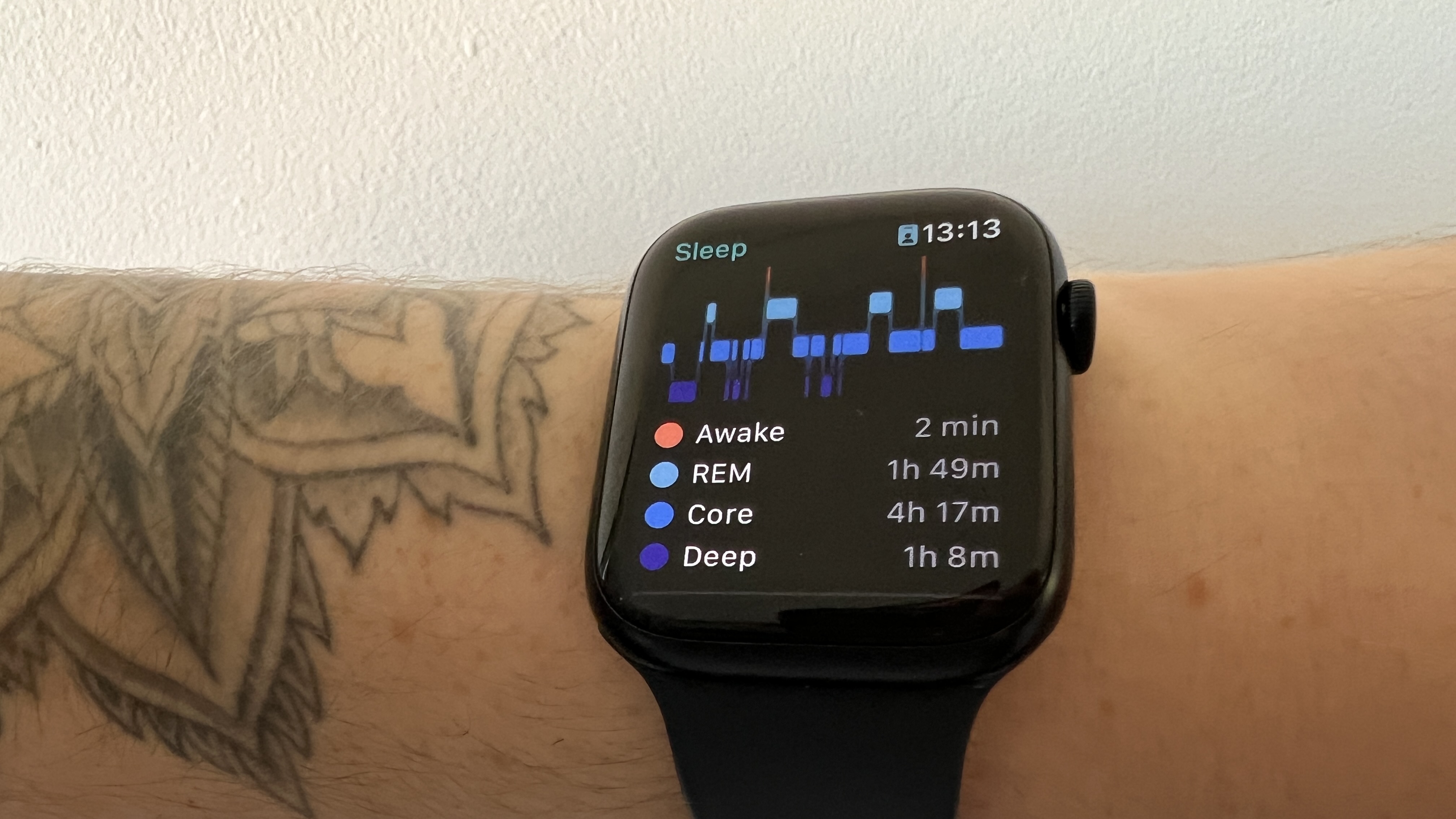
Sleep measurement has been there before, but in a far more rudimentary sense than what you have now. With this revamp, you can now track your sleep stages, and the sensors analyze your body temperature during sleep and whether there are any external temperature-based reasons for awakening in the middle of the night.
Cycle tracking takes a combination of your wrist temperature (a pretty accurate indicator) and other menstruation-tracking information to predict ovulation and give you a nudge when would be the best time to do the business if you are trying to conceive.
Admittedly, this is something I cannot test, and a quick heads up, it takes a month of data tracking for this feature to properly work. But from speaking to my friends and colleagues who are either trying to conceive or have the Apple Watch Series 8 themselves, this has been a game changer. For anyone worried about security, all of this data is end-to-end encrypted.
And finally, a feature you hopefully never have to use, which is Crash Detection. Using a combination of the 3-axis gyroscope, g-force accelerometer, microphone, barometer, GPS, and a sensor-fusion algorithm trained with over a million hours of crash data, your Apple Watch can detect if you’ve been in an accident and call emergency-service providers.
Of course, I’m not willing to test this, and there have been some teething issues early on, such as the watch calling emergency services after someone’s been on a roller coaster. But it’s one of those nice-to-have features that could save a life at some point.
Apple Watch Series 8 features
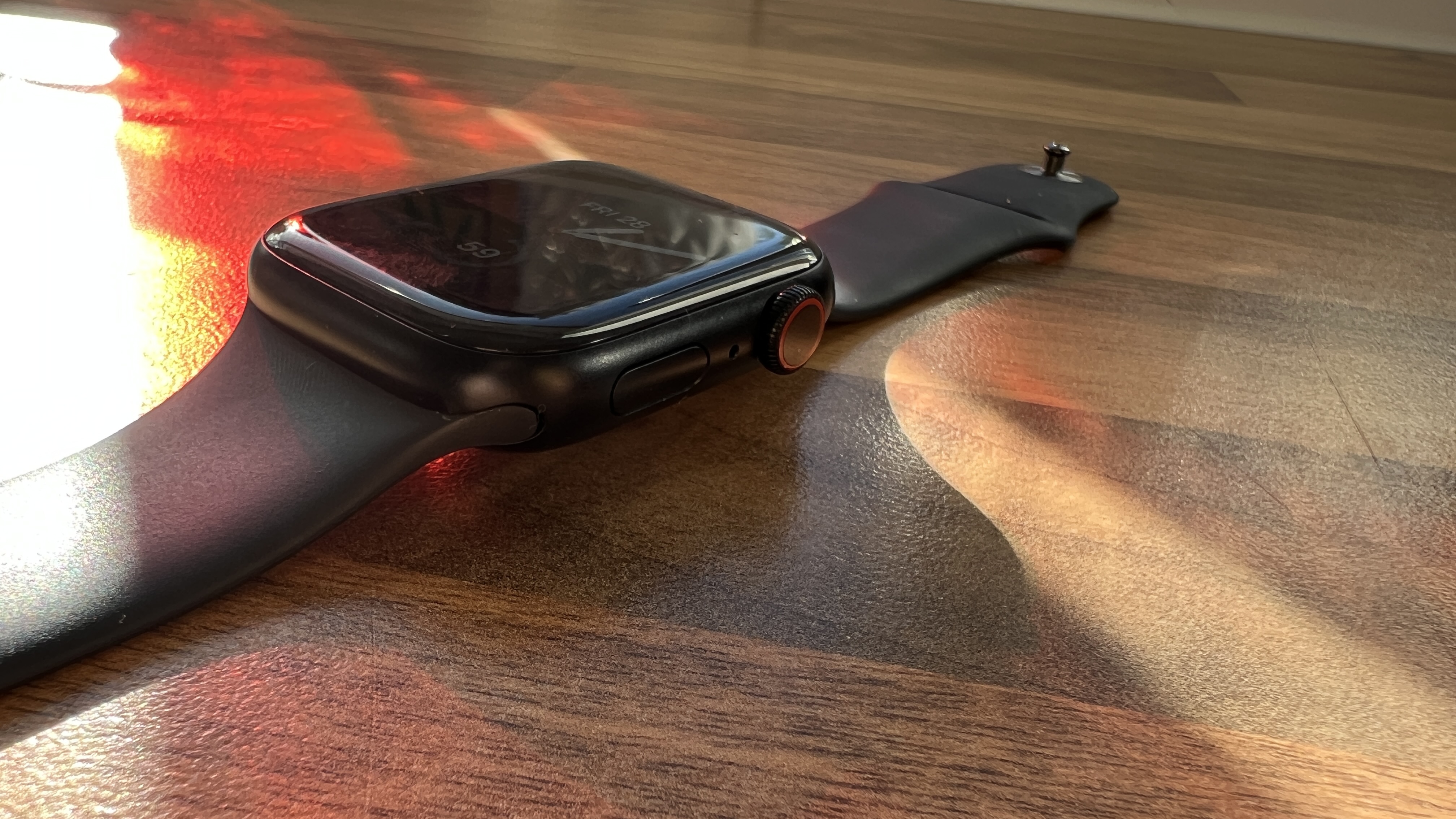
Of course, speaking of its fitness and health credentials, the on-board technology and build quality match what is needed to make these work: WR50 water resistance, IP6X dust resistance, accelerometer, gyroscope, magnetometer, optical heart rate sensor, barometer, temperature sensors and an always-on altimeter.
But of course, the features here are not about the hardware — it’s what the software achieves. Thanks to the tight integration with the app store on your phone, this thing does a lot of stuff!
Beyond the core features that watchOS 9 implements, such as reminders to take your medication, the updated calendar app and the slew of features you’ve become accustomed to, such as notifications, making calls and listening to music/podcasts from your watch, the combination of first-party and third-party app integrations really flesh out the experience.
For example, when I go into London for one of my many work meetings, I use Apple Pay to get onto the underground, have the latest episode of Not Another D&D Podcast downloaded to my watch to listen as I commute, open up Google Maps to find my way to the meeting point, and in the moments that I forgot to turn off a plug at home, just open up my Apple Home app to switch it off immediately.
It’s a really slick experience, which is exactly what you’d expect from a watch UI that Applehad the benefit of eight years to work on and improve.
Apple Watch Series 8 battery life & charging
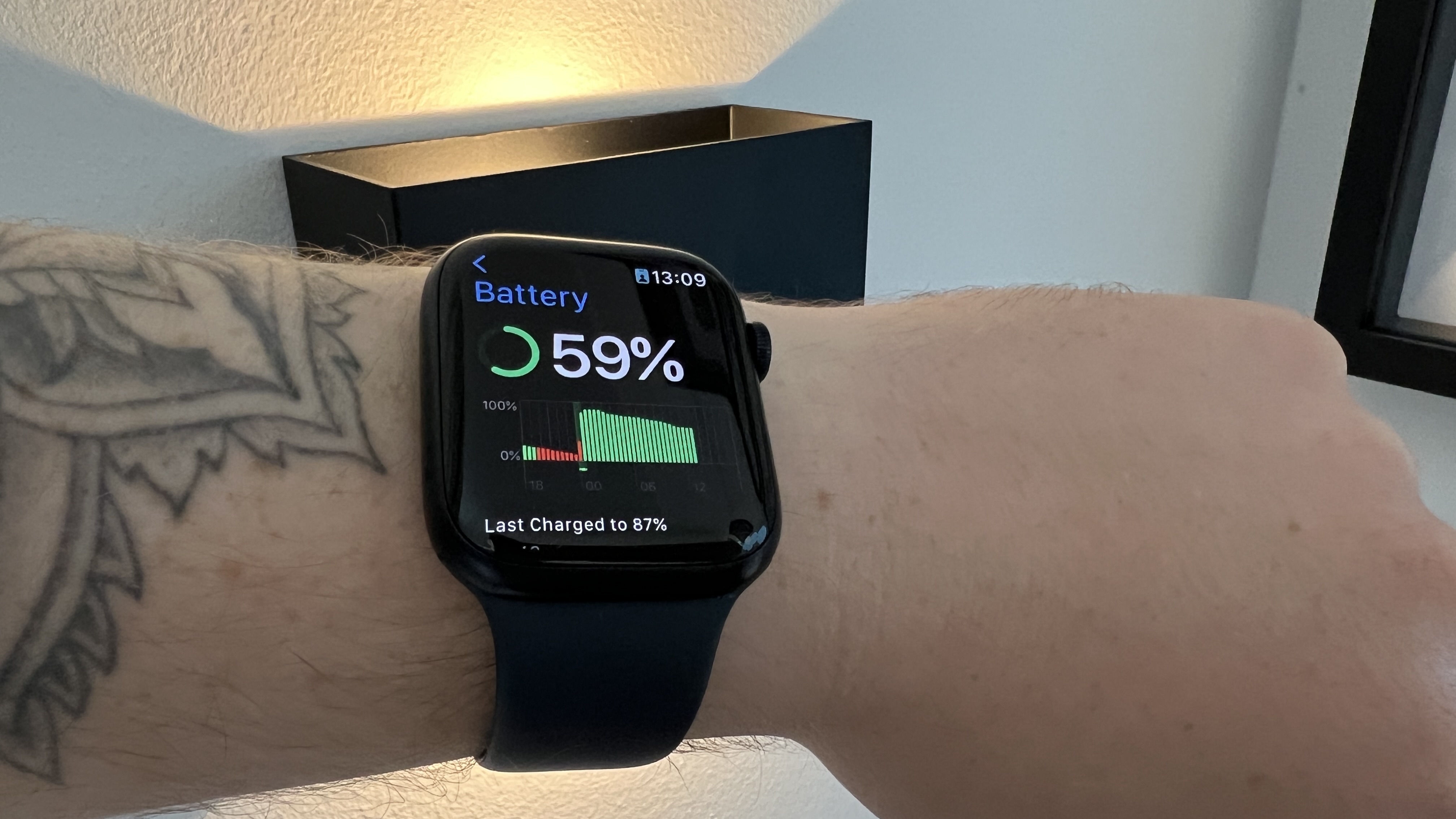
Let's talk about what has always been a bit of a weakness of the Apple Watch. In the Series 8, Apple promises up to 18 hours from the 308 mAh cell inside here. This is largely accurate, but the issue is there are plenty of variables that may cause it to dwindle faster.
This is far behind the up to 14 days of the Huawei Watch GT 3 Pro, but very much in line with what you’d expect from an Apple Watch, which is barely enough for a day and a half with some attention paid to it. I remember the many times at music festivals where you are away from a charger for an entire weekend and fear this wouldn’t survive past the first day of bands!
Luckily, there is now a low-power mode, which does a few things such as reduce the screen brightness slightly and reduce the amount of times the various sensors on the watch take readings to increase the battery life. Apple claims 36 hours, and I safely hit that at a total of 36 hours and 42 minutes.
Bottom Line
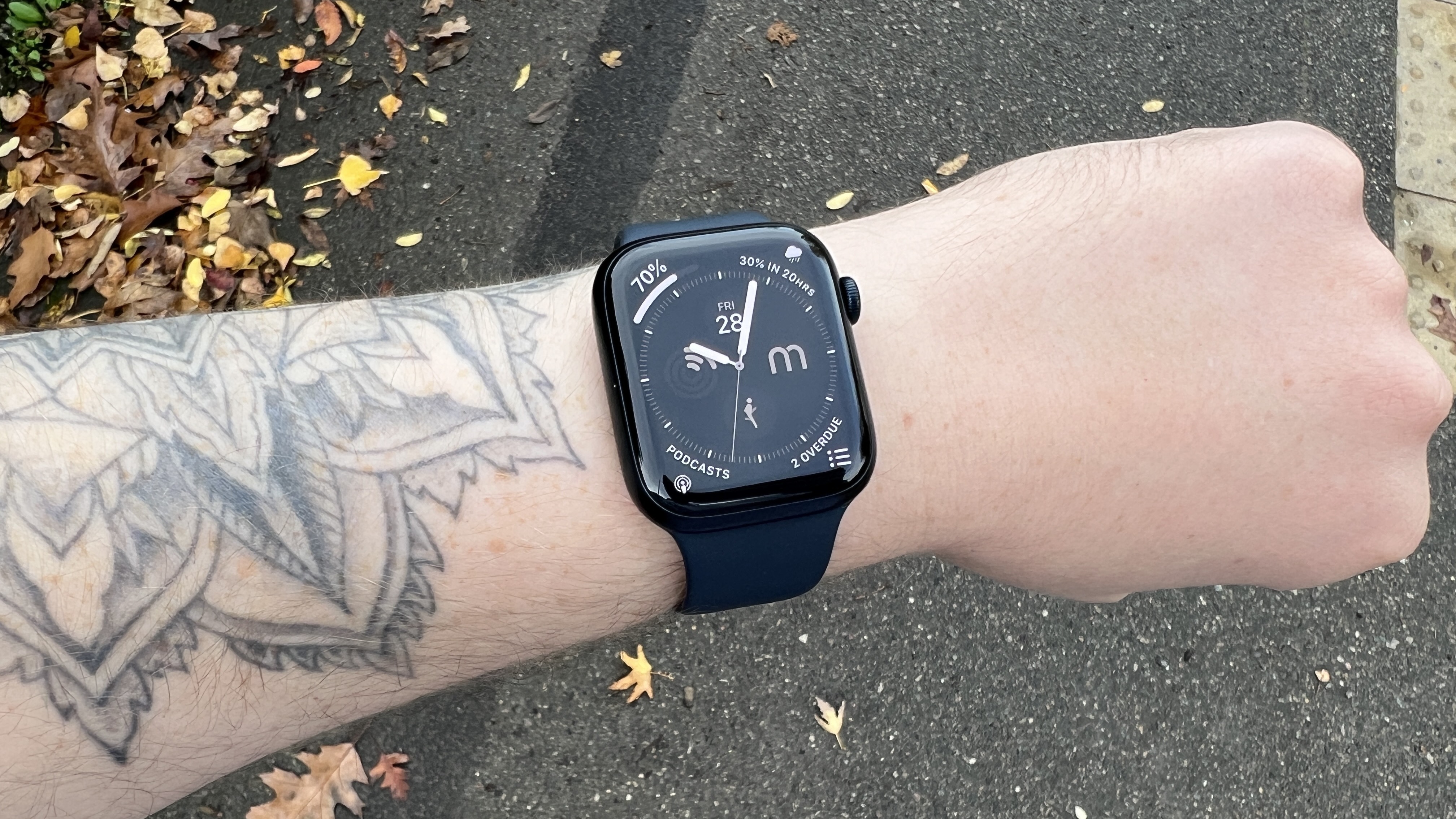
I’ll end as I began, the Apple Watch Series 8 is a great smartwatch. Sure, the upgrades are incredibly mild, and while the battery life has been improved slightly, it’s still not as long as I’d like. But after years of iterative updates, this formula is one of the strongest in the wearables market.
So, rather than break it down, let’s ask the key question: do you need one? Because while this is objectively a great piece of kit, whether this is a must-buy is rather difficult to answer — especially with the increasingly impressive Apple Watch SE 2 and the Apple Watch Ultra in the mix. Let me break it down:
Upgrading from the Apple Watch Series 6 or earlier
I would look at the new SE. Think carefully about whether you actually need an always-on display, if you benefit from the ECG and blood oxygen readings, if temperature sensing and more accurate cycle tracking is important to you, and whether you’re going to miss that additional millimeter of screen real estate and the edge-to-edge display.
If these are important to you, then you will love the Series 8. The fast-charging boosts this up to full in a jiffy and the third-generation optical heart sensor does pick up your pulse quicker. Plus, you get a greater variety of material finishes.
If you are a professional athlete/hardcore exercise fanatic
If you need something super rugged for your insane workout routine, or you’re a professional athlete, then you fall into the niche where I would recommend the Apple Watch Ultra. That Titanium finish, extended battery life, dual GPS and military-standard testing for durability means it will more than capably handle your demanding needs.

Put simply: the Apple Watch Series 8 is damn good. But with tiny updates and the impressive upgrades made to the second generation SE, make sure you figure out what you actually need before clicking buy. You may be just as happy and save yourself some serious money in the process.

Jason brought a decade of tech and gaming journalism experience to his role as a writer at Laptop Mag, and he is now the Managing Editor of Computing at Tom's Guide. He takes a particular interest in writing articles and creating videos about laptops, headphones and games. He has previously written for Kotaku, Stuff and BBC Science Focus. In his spare time, you'll find Jason looking for good dogs to pet or thinking about eating pizza if he isn't already.
